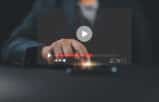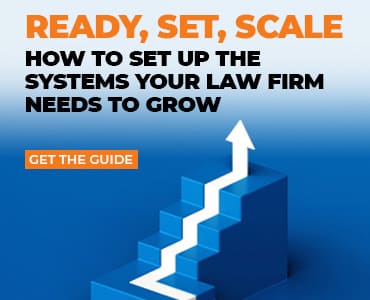Lawyers attend conferences. Lawyers tweet. Much like chocolate and peanut butter, these are two great trends that, for the most part, have trended great together.
The integration of the two phenomena was inevitable from the day Twitter made its debut, and happily, the live-tweeting of legal events has proceeded remarkably well. Compared to technology events, where faltering speakers are often ripped to shreds by the attending twitterati (worse still, when the merciless conference Twitter feed is projected onto the screen behind the presenter), tweeting lawyers have been models of decorum and generosity.
There’s a Right Way to Tweet Meetings
Still, the social media platform doesn’t exist that’s not susceptible to errors of both omission and commission, and Twitter is Exhibit B. (Facebook is, and always will be, Exhibit A.) Accordingly, here are my five pieces of advice about live-tweeting a legal event.
1. Prepare beforehand. Arrive at the event about 10 minutes early to get a good seat (preferably near the back, so you can assess audience reaction and identify questioners) and to ensure you’re plugged and logged in ahead of time; you don’t want to “join the event in progress.” Send out a courtesy tweet at the start, identifying where you are and what you intend to do for the next couple of hours. Type out each presenter’s name and credentials in a separate document, so you can copy then paste them quickly into a tweet when they start speaking.
2. Get the details right. Identify the official conference hashtag and use it; if the organizers haven’t chosen one, scan the early candidates on Twitter and go with the consensus pick (if you’re lucky, you’ll get to be the one who makes it up). Spell the speakers’ names correctly and link each salient point to the person who delivered it. Yes, live-tweeting is a hurry-up game; but you’re acting as a broadcaster, and your first responsibility is to be accurate: each individual tweet is a stand-alone dispatch that could be retweeted all over the world.
3. Quality beats quantity. Aim for fewer, well-written, more thoughtful tweets, rather than a torrent of sound bites. First reason: Someone else will probably provide the torrent anyway. Second: Your subscribers don’t want to be buried in tweets. Third: Carefully crafted tweets have a better chance of retransmission (don’t use all 140 characters, either; make it easy for someone to RT you.) Fourth, you’ll have time to offer your own observations and insights on the presentations (being sure to identify them as your own, not the speaker’s).
4. Scan other Tweets. Open Twitter in a separate tab and set up a search for the event hashtag. Unless you’re the only person in the room broadcasting the event, there’ll be other tweets; refresh the search screen frequently to see what others are saying, retweet the best of these updates, and recommend your subscribers follow these fellow tweeters. If it’s a major conference with multiple sessions, do the same with other session streams. It’s both excellent etiquette and a powerful networking tool.
5. Don’t be a jerk. Twitter has enabled a new type of heckling: the obnoxious or sarcastic tweet. Unless you’re genuinely funny, and not many people are, tweets that mock a speaker or rip a presentation will reflect more poorly on you and your online reputation than on your targets. By all means, disagree vigorously with a speaker whose points you dispute. But abide by this simple rule: If you wouldn’t stand up and say it into a microphone in front of the live audience, don’t say it on Twitter.
Get more tips in Attorney at Work’s guide “Social Media Marketing Guide for Lawyers.”
Jordan Furlong (jordan@stemlegal.com) is a Senior Consultant with Stem Legal, where he advises lawyers and law firms on social media, and communications strategy. He authors the award-winning blog Law21: Dispatches from a Legal Profession on the Brink.
Sign up for the Daily Dispatch
Be sure to subscribe to Attorney at Work to get updates with our daily posts for enterprising lawyers, and more.
















